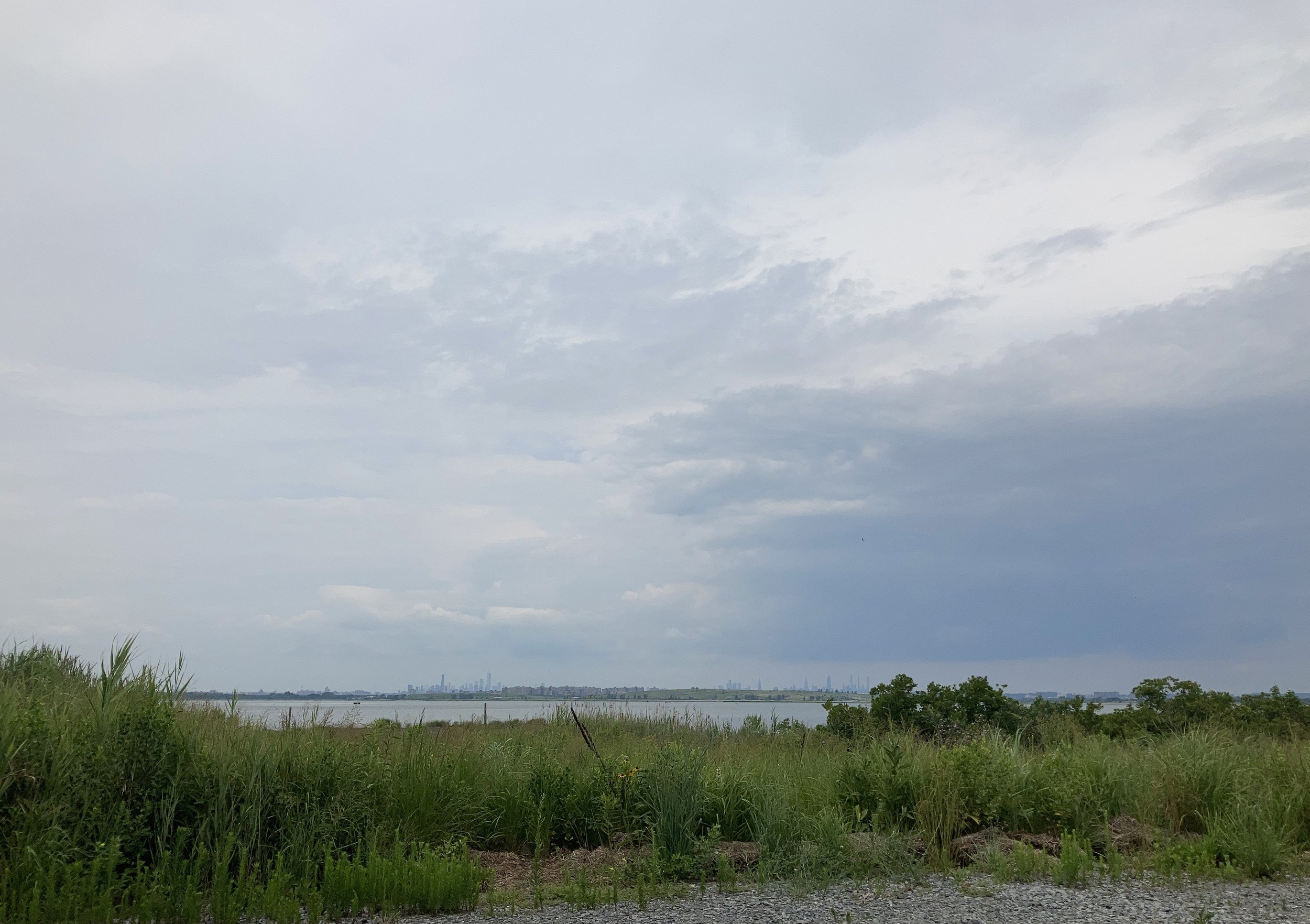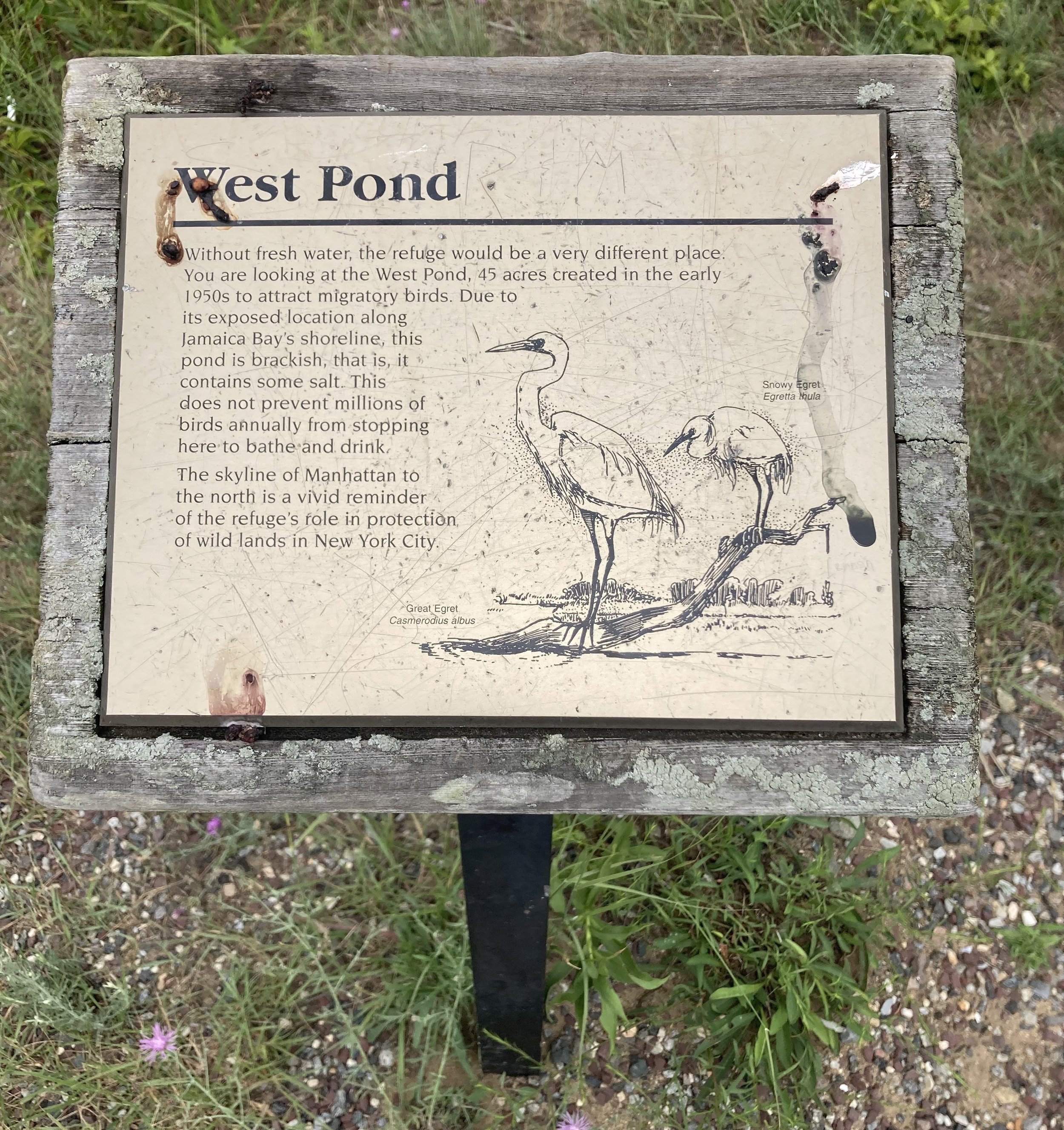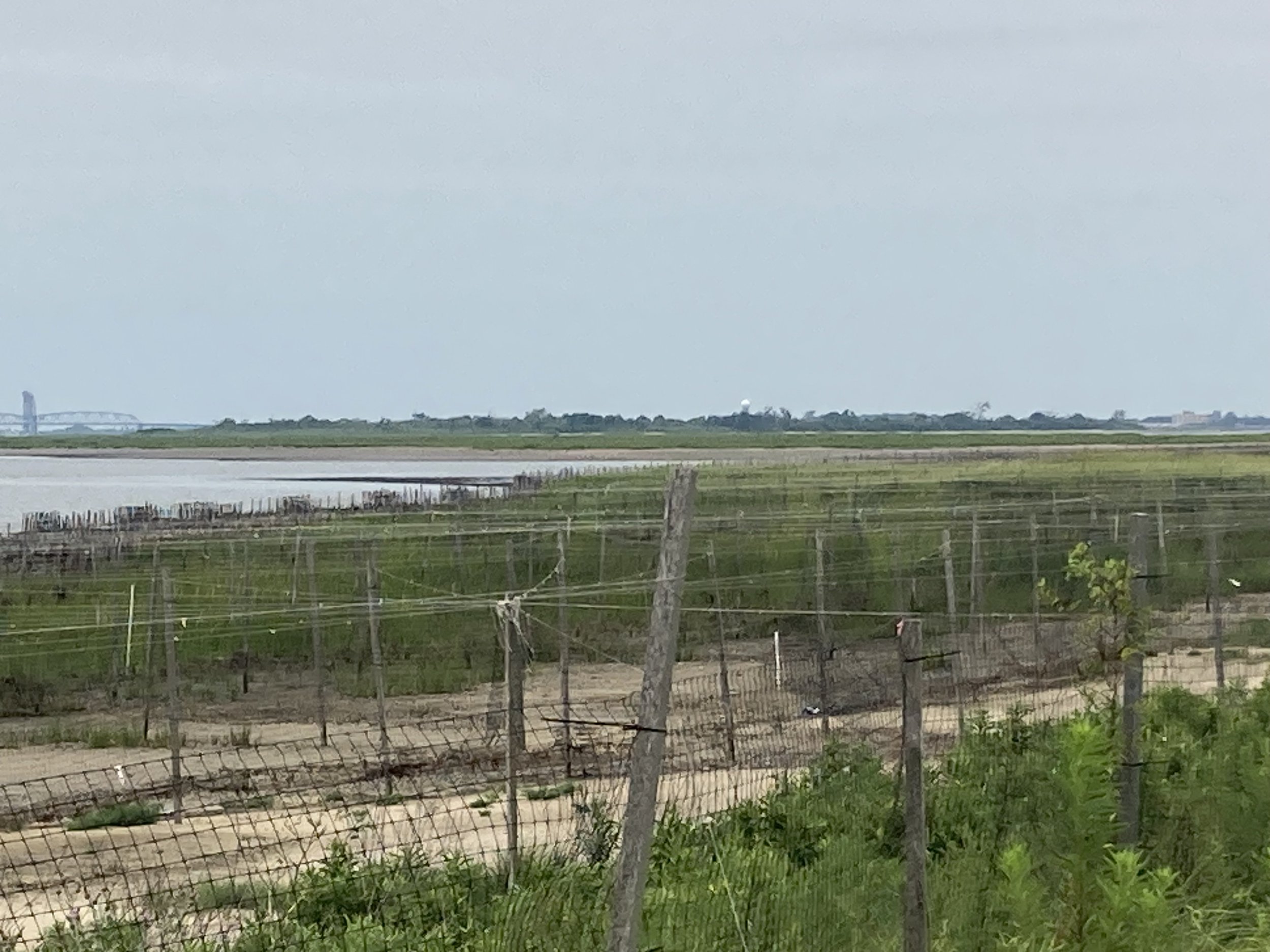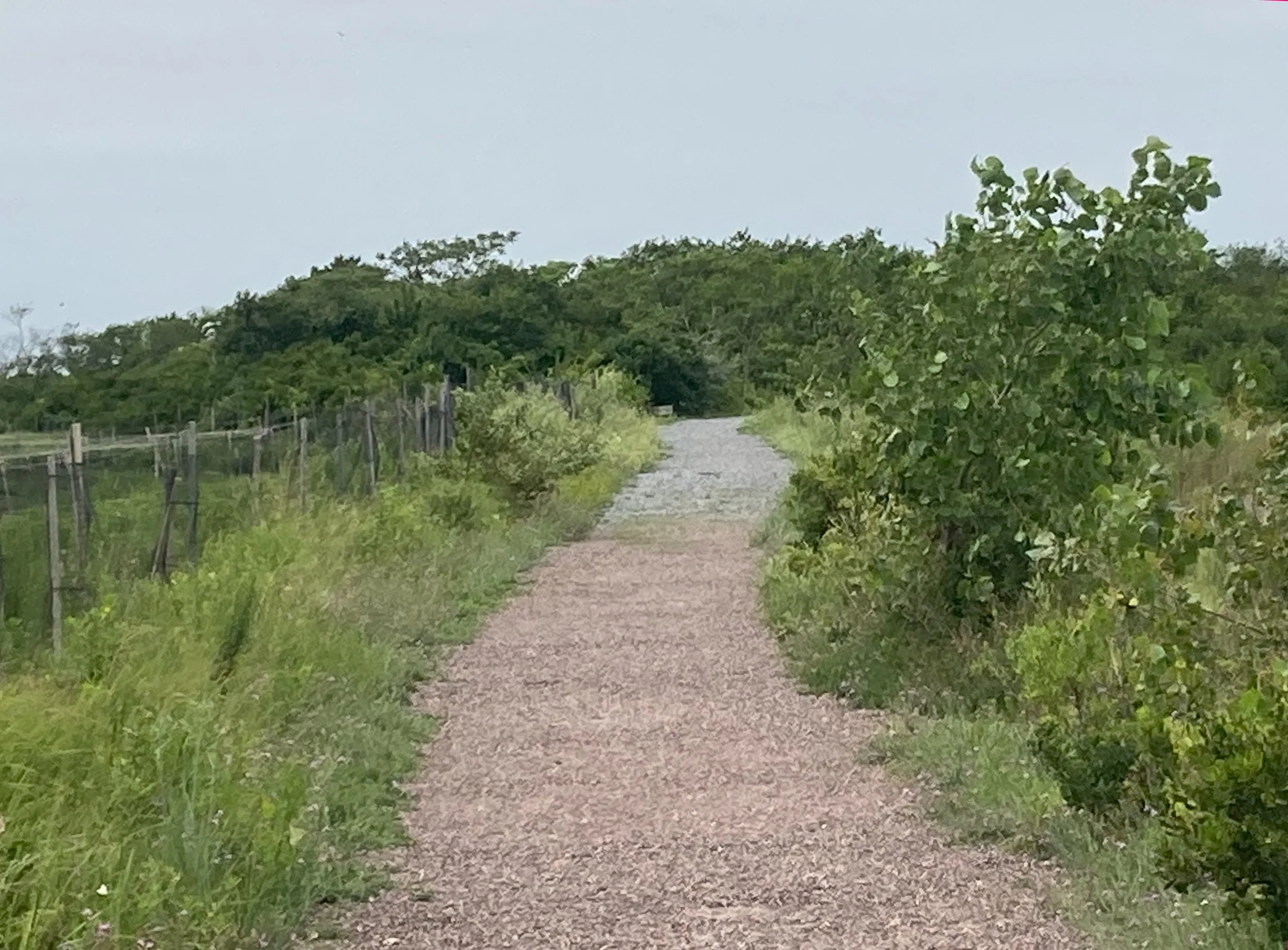Jamaica Bay Wildlife Refuge (Queens)
WHERE: You guessed it - the Jamaica Bay Wildlife Refuge
START/FINISH: Jamaica Bay Wildlife Refuge Visitor Center, by way of Q52 SBS or Q53 SBS bus. Details in the text.
DISTANCE: 1.8 miles (2.8 kilometers)
Photographs by Michael Cairl except as noted. Map courtesy footpathmap.org
Route of this walk, reading clockwise.
The Jamaica Bay Wildlife Refuge, just southwest of JFK Airport, was created in the 1950s by New York City’s Department of Parks and Recreation Commissioner Robert Moses. This site became part of the National Park Service in 1972 when the Gateway National Recreation Area was established. It includes over 12,600 acres of water, salt marshes, freshwater and brackish water ponds, upland fields and woods, and open bay and islands. It is one of the largest bird habitats in the northeastern United States and is a great place to observe the seasonal bird migration as well as resident species. It is amazing that this place is within the city limits. Gateway also encompasses Jacob Riis Park, Fort Tilden, and Breezy Point, at the western end of the Rockaway peninsula; Floyd Bennett Field, Plumb Beach, and Canarsie Pier in Brooklyn; Fort Wadsworth, Miller Field, and Great Kills Park on Staten Island; and Sandy Hook in New Jersey.
I had not been here in many years and wanted to return in part to see how accessible this walk would be. The visitor center and the entire walk are accessible but the footpath, while nearly flat, is paved with gravel. The walk is a loop around West Pond.
There is a lot of information available at the visitor center. Do stop there before starting out or before you leave.
Starting out on the path, I was immediately aware how removed I was from the urban hustle and bustle. Apart from aircraft taking off from JFK, I could hear only the sound of birds and the wind. I saw only a few other people out walking. All this was therapeutic!
In 2012, Superstorm Sandy caused significant damage throughout Jamaica Bay, including the Wildlife Refuge and the nearby community of Broad Channel. What appears on the map above as an outlet from the West Pond shows where Sandy created a breach. This has been filled in since 2021 and the restoration is a work in progress.
Restoration at the site of the 2012 breach. The Marine Parkway - Gil Hodges Memorial Bridge is in the left background.
The footpath at the site of the breach.
The far-off towers of Manhattan from the footpath.
Wildflowers and birds were in abundance, as were insects. Next time I go there, I’ll put on insect repellant.
Near the end of the walk I saw a beautiful little bird. Not being a bird expert, I had to look it up. It was an American goldfinch. Photograph by Adam Jackson.
The nearest subway station, Broad Channel (lower right corner on the map above), is not accessible but is less than 1 mile (1.6 kilometers) by foot from the visitor center. The Q52 SBS and Q53 SBS buses all stop on Cross Bay Boulevard at the entrance to the Wildlife Refuge. Transfer to these buses from the subway at these fully accessible stations:
Woodside - 61 Street (7 train, Long Island Rail Road) to Q53 SBS
Jackson Heights - Roosevelt Avenue (7, E, F, M, R trains) to Q53 SBS
Beach 67 Street (A train - Far Rockaway branch) to Q52 SBS
Rockaway Park - Beach 116 Street (Rockaway Park shuttle) to Q53 SBS.
Also transfer from the A train at Rockaway Boulevard (not yet accessible) to Q52 SBS and Q53 SBS.
If you drive to the Wildlife Refuge, there is parking at the visitor center.
This was not a physically taxing walk but I took it a bit slowly because of the gravel pavement and because it was worth taking this in slowly. I will happily do this walk again, in a different season for the sake of variety. If you do this walk, wear sunscreen, insect repellant, and a hat, and bring binoculars! There are picnic tables next to the visitor center, so if you bring lunch, have it there. Do not have your lunch on the trail. Above all, take in this amazing place, breathe deeply, tune out all other stimuli, and enjoy this in-city remove from the city.








